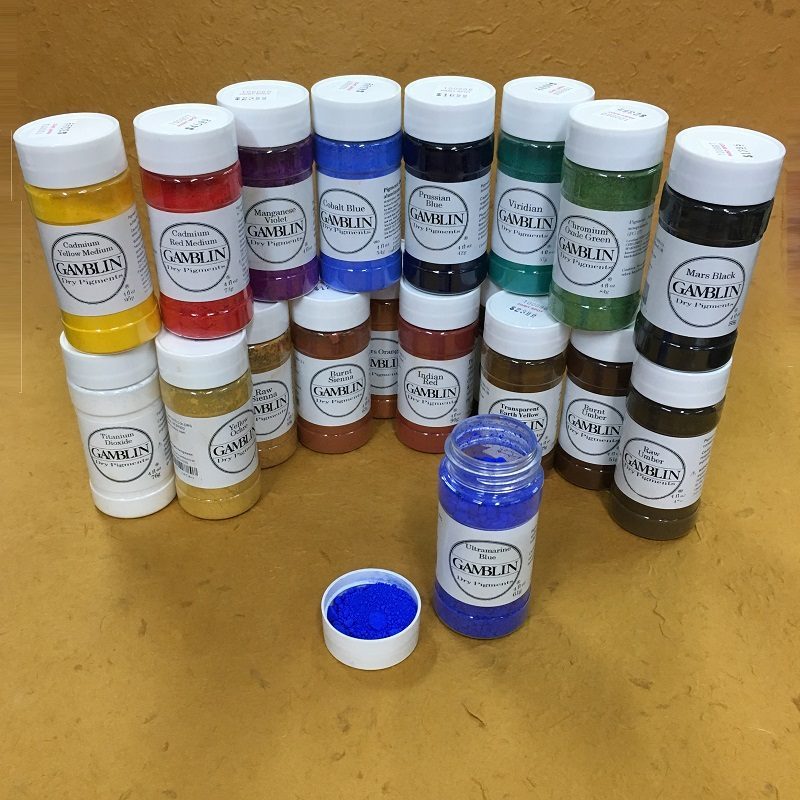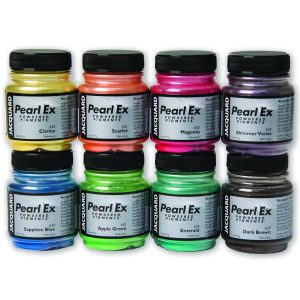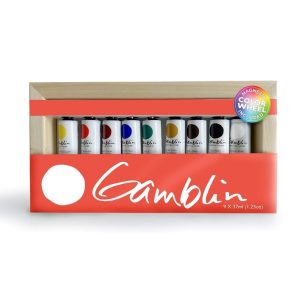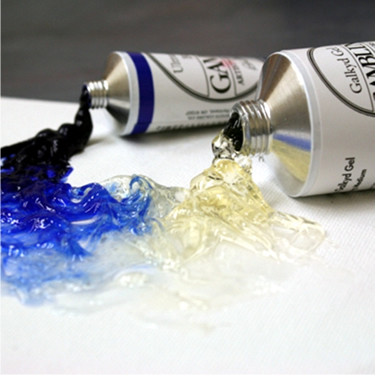Description
Gamblin Dry Pigments
Gamblin offers a range of dry pigments for painters who want to make their own oil colours.
Size: 4 oz
Dry pigments are used to create a variety of painting media such as oils, acrylics, watercolours, egg tempera, and encaustic. Dry pigments are often used in mixed media and decorative painting techniques as well.
To create an artist’s oil colour, pure dry pigments are thoroughly ground and mixed into refined or cold-pressed linseed oil to form a stiff paste. For best results, use a glass muller and a smooth glass palette.
Regardless of the binder used to mix dry pigments, artists should be very careful when handling powders. A respirator mask should always be worn so that no pigment dust is inhaled.
Here are two quick recipes for making your own paints. Ask us about our Schmincke Mediums for making your own paints.
DIY Watercolour Paints
Gum Arabic is a major ingredient for most watercolour paints because it is non-toxic and quick-drying. It also mixes easily with pigments to create colour.
Ingredients: GUM ARABIC 1 part, WATER 2 parts.
In a double-boiler, heat the water and stir in the gum arabic. After the solution cools, cover and leave it until the solution is clear. Powdered gum takes less time to dissolve than lumps, but complete dissolution still requires about two days. Strain the gum water through two layers of cheesecloth into a clean jar. Keep this solution refrigerated when not using it, because it spoils easily.
Mix pigment paste (wet dry pigment with a little water until it is a paste then combine with the gum solution into a thin paste and paint directly onto paper, parchment, or gesso panels. For opaque paint, use a larger proportion of pigment in the gum solution. For transparent watercolour techniques, thin the paste with water. You may add a small amount of glycerin (no more than 5 percent) to this solution to reduce brittleness in the final paint film.
DIY Egg Tempera Paint
There are many recipes for Egg Tempera. Some painters strictly use egg yolk as the binder for their paint. This one is pretty basic. It is easy to customize the viscosity of the paint to suit your preference. As the binder of egg tempera, the yolk serves as a natural emulsion into which oil, resins, and turpentine can be mixed.
Ingredients: WHOLE EGG (YOLK AND WHITE), RAW LINSEED OIL 1/4 volume of egg shell, WHITE VINEGAR 4 drops.
Break the egg and drop the contents into a small, clean jar. Add the oil, close the jar with a lid, and shake the contents vigorously until they combine completely. Add vinegar last as a preservative to help prevent quick spoilage. Strain the mixture through two layers of cheesecloth into another jar.
How to Use: This emulsion can be thinned with water and is less oily than other emulsions. Grind pigment paste into the emulsion, but only enough to use in one painting session. This paint can be used directly on gessoed panels or wet-into-wet on fresh oil paint.







